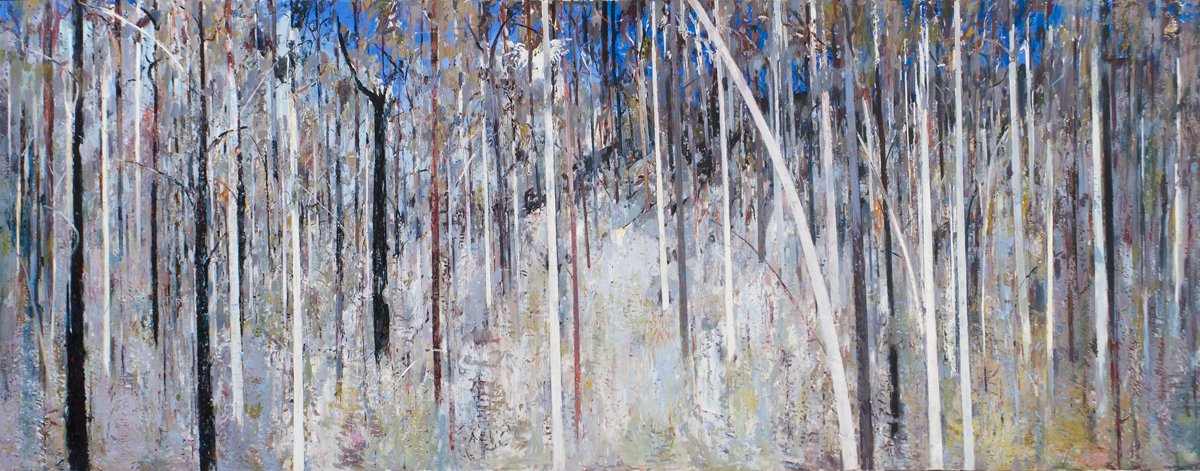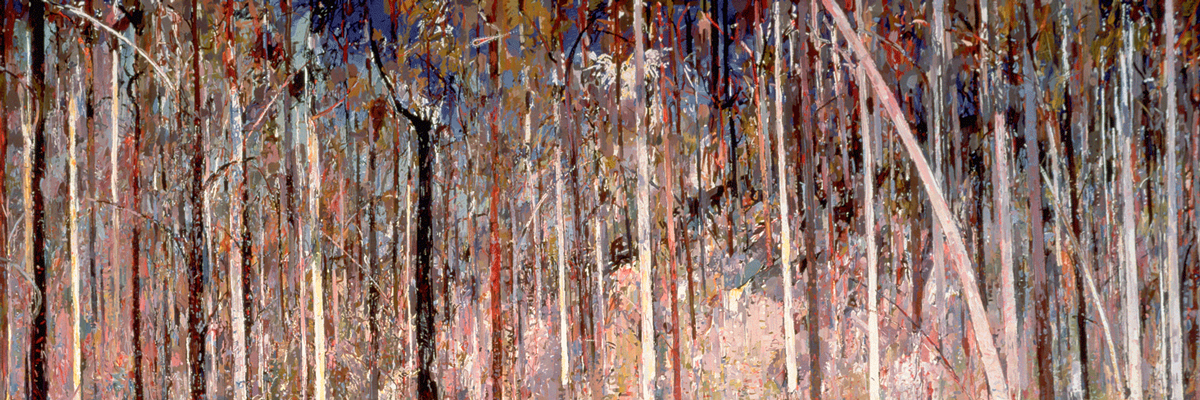The Great Hall Tapestry brings Arthur Boyd's vision of the bush to the heart of Parliament
The Great Hall Tapestry is a work on an epic scale. It is a collaboration between some of the finest creative minds in Australia at the time Parliament House was built: artist Arthur Boyd; architectural firm Mitchell/ Giurgola & Thorp; and the craftspeople of the Victorian Tapestry Workshop (now the Australian Tapestry Workshop) in Melbourne. It is one of the largest tapestries in the world, measuring 20 metres wide by nine metres high, and is the focal point of the native timber-clad Great Hall. It pays homage to the centuries-old tradition of hanging tapestries in grand buildings. However, rather than a heroic scene or majestic panorama, it depicts the essence of the Australian landscape—the textures and colours of life under the canopy of a eucalypt forest.
A monumental effort years in the making

Arthur Boyd (1920‒1999) Untitled (design for Great Hall Tapestry), 1984, Parliament House Art Collections, Canberra, ACT.
The idea for a great work of art as the centrepiece of the Great Hall was born in the earliest stages of designing Parliament House. The architects had considered a monumental painting for the space; however, after a meeting in July 1983 with renowned Australian artist Arthur Boyd in London, the decision was made to commission a major tapestry for the southern wall.
Boyd created a large landscape painting Untitled (Shoalhaven Landscape), which formed the basis for the design of the tapestry. It depicts a bush scene in the Shoalhaven River area in southern New South Wales, an area that inspired many of his works.
The tapestry is entirely handmade—the weavers worked directly from Boyd’s painting to draw the outlines for the work, which was woven in four sections. It took 14 full-time weavers two years to complete the piece, using yarns that were specially dyed to match the colours in the painting
A famous comet makes an appearance, creating a connection to another epic tapestry

Arthur Boyd (artist, 1920–1999) and Victorian Tapestry Workshop (interpretation and execution, established 1976), Great Hall Tapestry, in four panels (detail), 1984–1988, dyed wool linen and polished cotton yard on cotton warp, Parliament House Art Collections.
At the time the Great Hall tapestry was being created, Halley’s Comet appeared in the sky, just as it had done in 1066 on the eve of the Norman Invasion —a phenomenon that was captured by the makers of the legendary Bayeux Tapestry. In recognition of this event, and their connection to these ancient craftspeople, the weavers at the Victorian Tapestry Workshop sought permission from the artist to include the comet in the work—permission that he happily granted.
Can you see Halley’s Comet in the tapestry?
Currently on display.
Cost
Free
Venue
Parliament House Great Hall
Parking
Free for 1 hour, then parking rates apply
More information
Call Visitor Services on 02 6277 5399 or email visitorservices@aph.gov.au
Arthur Boyd (artist, 1920–1999) and Victorian Tapestry Workshop (interpretation and execution, established 1976)
Great Hall Tapestry, in four panels, 1984–1988,
dyed wool, linen and polished cotton yarn on cotton warp,
Art/Craft Program,
Parliament House Art Collections